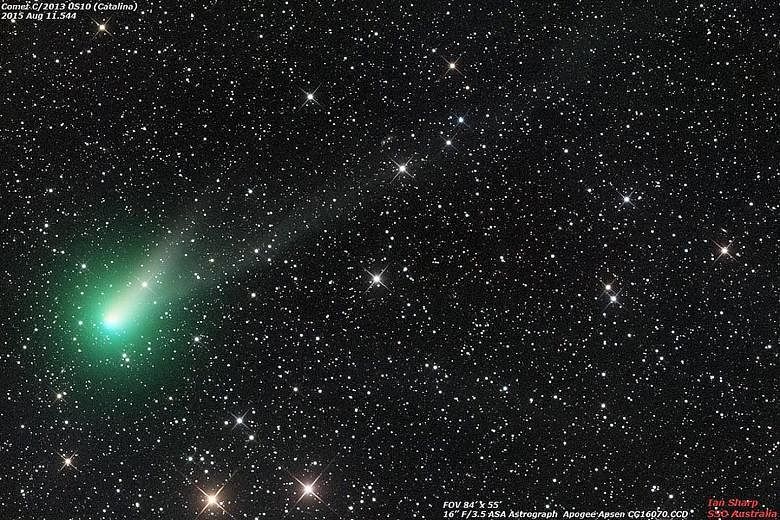The Comet Catalina captured in all its dazzling glory by avid astronomy photographer Ian Sharp. First discovered in 2013, the comet has since brightened, making it visible with binoculars. The celestial object whose body is made up of an ice and dust nucleus, trailing a tail of gas and dust particles, comes from the Oort Cloud. This is a region at the outermost part of the Solar System - which contains trillions of icy bodies that can become comets if they wander into a path towards the Sun, said Mr Sharp. Catalina's closest flyby for those in the Northern Hemisphere, including Singapore, will be on Jan 17, when it is 100,000,000km from Earth.
But tonight could bring the picture-perfect moment. Catalina - one of the most beautiful comets discovered - could be visible even to the naked eye because it is expected to move within 0.4 degree (less than the apparent width of the Moon) of Arcturus, which is one of the brightest stars in the sky. After this period, Catalina will likely return to the farthest reaches of the Solar System, never to be seen again.

